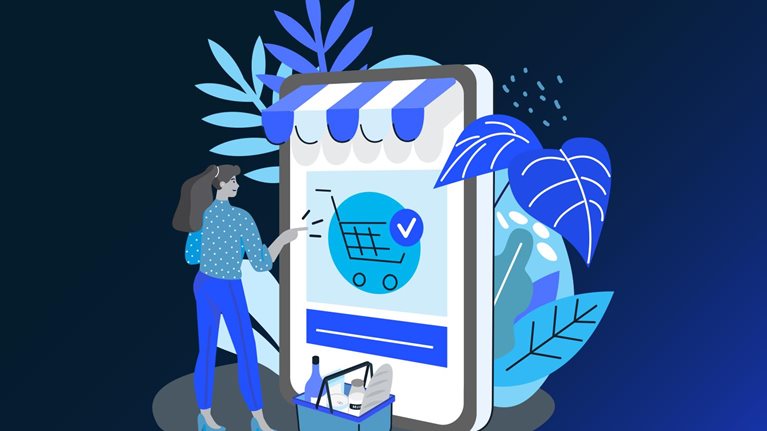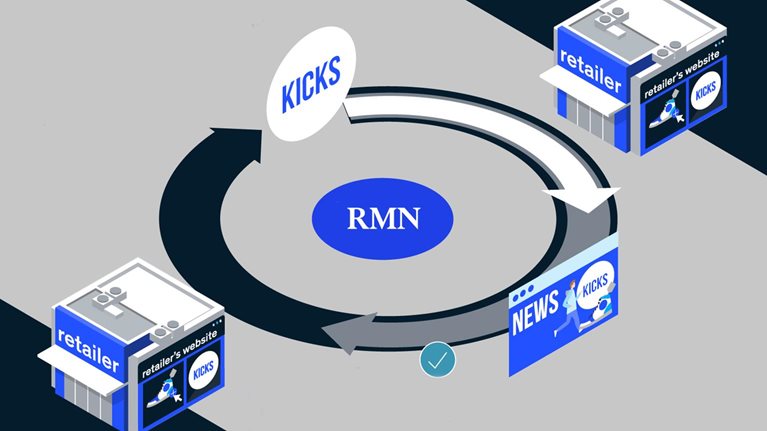Key takeaways
- In the United States, retail media was worth more than $30 billion in 2021.
- Retail media networks (RMNs) are growing by more than 10 percent year-over-year in the United Kingdom.
- Distinctive challenges and opportunities within European, Middle Eastern, and African (EMEA) markets create potential opportunities for retail media networks (RMNs) as well as different considerations in execution.
For all the headlines about e-commerce over the past decade, the reality is that online sales were, until two years ago, just a small fraction of total retail revenue.1 COVID-19 created significant challenges for retailers. Consumers shifted to e-commerce channels by nearly 30 percent, accelerating the sector’s growth and creating challenges for traditional retailers, many of whom made significant investments to compete with pure-play online sellers. So what should traditional retailers do now?
They could lean on their longstanding, inherent strengths. Traditional retailers have customer relationships that often span generations. They know who their customers are, what they buy, and how their tastes have changed over time, and they’ve earned their trust and loyalty. Although competing with pure-play e-commerce platforms is expensive for brick-and-mortar retailers, retail media networks (RMNs) provide a potential opportunity for them to drive profitable growth by scaling their e-commerce operations.
RMNs hold potential value for consumers, in targeted advertising that addresses their needs and wants; for brands, in direct access to the targeted market; and for retailers, in the chance to build a high-margin business to drive e-commerce innovation. In the United States, retail media was worth more than $30 billion in 2021, and retailers across EMEA are starting to recognize RMNs as a hidden and fast-growing profit stream (RMNs are growing by more than 10 percent year-over-year in the United Kingdom, for example).2
Here, we explain the opportunity RMNs hold for retailers across EMEA, a market significantly different from the United States. Some of the differences could provide greater opportunity for retailers if they consider approaches that include developing a distinct go-to-market strategy that reaches the right customers, fostering collaboration between the RMN and the organization, and taking advantage of loyalty programs to maximize the addressable audience.
Would you like to learn more about our Growth, Marketing & Sales Practice?
How RMNs could complement a fast-changing industry
RMNs leverage retailers’ knowledge of consumer buying behavior to offer advertising opportunities for brands (Exhibit 1) to target relevant consumers through a retailer’s digital channels, physical store locations, and syndication on third-party platforms like Facebook, Google, or Roku.

Many major retailers in the United States have already built and scaled RMNs, led by Amazon, Target, and Walmart Connect. In EMEA, one potentially compelling reason to pursue RMNs is that they may enable bricks-and-mortar retailers to follow the shift of consumer spending online— and benefit from retail media’s significantly higher margins compared with those of core retail e-commerce.
That’s important: retailers, especially in low-margin businesses such as grocery, have a strategic need to drive higher profitability given the costs involved in creating and scaling e-commerce operations. RMNs can offset some of those higher costs: the additional investment to build an RMN is relatively low, and activating ads on a retailer’s site can deliver margins ranging from 60 to 85 percent.3
RMNs also offer an opportunity to provide brands with direct access to customers. Research shows 91 percent of customers are more likely to spend on brands that provide relevant offers and recommendations, yet brands have traditionally had limited access to first-party customer data, limiting their ability to target audience segments.4 Additionally, the likely decrease of availability of third-party data due to tighter privacy approaches by companies such as Apple and Google may accelerate in the next two years, making access to first-party data even more important for brands that want to undertake targeted marketing.
Retailers already hold rich first-party consumer data through their websites and loyalty programs, which some 20 percent of brands cite shopper insights as a primary reason for working with RMNs.5 Audience segmentation may not only enable brands to reach the right customers and increase the effectiveness of their advertising spend; when it’s combined with audience intelligence, which allows brands to measure the impact of their advertising across channels, outcomes could be optimized. We’ve found using first-party retailer data to target customers can deliver margins ranging from 30 to 50 percent.
Finally, RMNs offer an opportunity to deliver a seamless, digitally enabled experience. Retailers globally have opportunities to innovate in both physical stores and online as competition from pure-play e-commerce platforms grows. Tailored ads, built with first-party audience data, ensure that customers who consent receive relevant offers and recommendations, and digitally enabled ads in physical stores hold the promise of a personalized omnichannel experience by engaging with consumers as they shop.

The tech transformation imperative in retail
The EMEA retail media opportunity—and challenges
Many RMNs were established in the United States prior to COVID-19. In EMEA, the consumer shift to e-commerce during the pandemic encouraged retailers to re-examine RMNs as a means to quickly invest in and scale online sales channels (Exhibit 2). There are also differences between EMEA and US markets which present distinct opportunities—and challenges—for RMNs in EMEA.

First, while e-commerce penetration is slightly lower in some EMEA markets than in the United States (online represented 14.4 percent of total sales in Western Europe in 2021 versus 15.3 percent in the United States). In others, it is significantly higher. Online sales comprise 28.3 percent of retailer revenue in the United Kingdom and 18.1 percent in Germany, meaning there’s a significant retail media opportunity in those markets as available inventory is proportionately higher.6
Second, the in-store digital experience is more advanced in Western Europe for example than in the Unites States. Many EMEA retailers have been more aggressive in seeking to monetize the in-store opportunity in response to the region’s stricter data-privacy laws. They have an existing advantage when it comes to developing RMNs (Exhibit 3). For example, retailers could use in-store digitization to deliver personalized ads that increase their share of wallet among bricks-and-mortar customers, while attributing the customer-data source to loyalty programs. In-store advertisements may also help retailers further differentiate their solutions from other media providers and significantly increase the reach (and revenue opportunity) of RMNs.

Third, additional regulatory requirements in EMEA, notably through the European Union’s General Data Protection Regulation, could also create opportunities for retailers with strong loyalty programs. GDPR requires informed consent from users before they can be included in digital-marketing campaigns, reducing the opportunities to use third-party data for advertising (a challenge compounded by moves to tighten privacy protections by companies). Yet RMNs are built on first-party data, notably through loyalty programs. That makes RMNs one of the few ecosystems where brands can access valuable audience data and gain end-to-end attribution, which is incredibly valuable to brands.
Finally, there are challenges. There are few genuinely multicountry grocers in EMEA, which limits the number of addressable impressions or loyalty card members an individual country’s RMN can leverage. While the country-level retail media opportunity is still significant— the UK RMN market alone is forecast to exceed $6 billion by 2025—this broad fragmentation makes it challenging for companies to reach the same scale as the US market.7 Second, the trade-promotion ecosystem is much more developed and profitable in EMEA compared with the United States, comprising around 55 percent of commercial spending among consumer-packaged-goods companies.8 That heightens the potential risk of RMNs impacting trade-promotion budgets, which must be taken into consideration in the design of RMN strategy.
Three opportunities in retail media
For European retailers, RMNs are quickly moving from something nice to have to something essential. Consumers value the deeper engagement RMNs offer both in-store and online, and brands are starting to demand them from their partners. Finally, the opportunity to drive profitable online growth by investing in innovative e-commerce offerings is critical, given the shifts in consumer behavior.
Building and expanding RMNs could be considered around three steps:
- Have a distinct plan. Impacting trade-promotion budgets can be avoided, and our experience is that best-in-class RMNs are insulated from trade budgets by living separately within marketing or the e-commerce business. Retailers could establish best practices for client engagement across vendors and agencies to access marketing budgets, considering the following:
- provide training for the sales team on metrics valued by marketers, such as cost per mille (CPM), click-through rate (CTR), page views, and reach
- foster an understanding of agency dynamics and the priorities for key agency stakeholders
- institute a compensation system that rewards sales teams not just for productivity but in expanding brand relationships
- Ensure the RMN and the organization are in sync. A successful RMN could coordinate operations with the following key retailer constituencies (Exhibit 4):
- digital commerce, to create the advertising experiences with consumers
- IT, to support the data and technical infrastructure to power the network
- marketing, to negotiate and govern the allocation of inventory reserves for third-party brand ad placement across physical and digital experiences
- merchandising, to coordinate interactions with supply-chain partners across both trade promotions and media

- Leverage data from loyalty programs. First-party data is the cornerstone of effective RMNs: it’s essential for reaching more shoppers and delivering high-quality customer segmentation and attribution. Leading EMEA retailers typically have loyalty programs where active users represent more than 10 percent of total loyalty-program members, but increasing that number could boost the effectiveness of RMN targeting and improve the percentage of loyalty members locatable on other channels. Some considerations include9:
- ensuring a loyalty program meets the needs of the RMN in terms of the desired demographics (gender, age, etcetera)
- validating customer information at sign-up (for instance, through email validation) and requesting multiple forms of identification to maximize matching
- piloting probabilistic matching, such as device fingerprinting and IP address mapping, to increase match rates
- updating the consent-management process and wording to drive improved consent across existing customers
Building a robust e-commerce sales channel is a key opportunity for most retailers, especially as consumer shopping behavior continues to migrate online. Yet investing in digital infrastructure is expensive, and the financial considerations are amplified when bricks-and-mortar stores are struggling. RMNs offer a path for traditional retailers to leverage their inherent strengths, build profitable growth, and become more innovative online.


